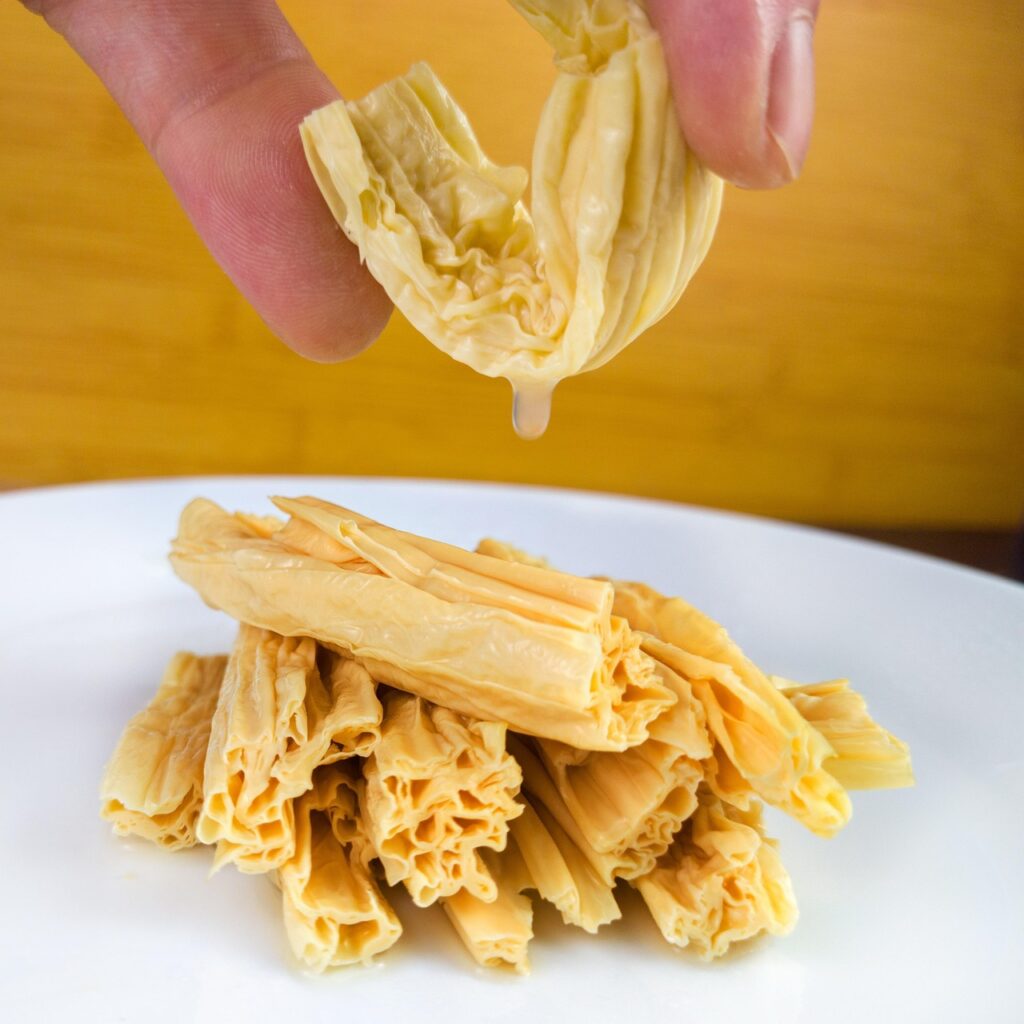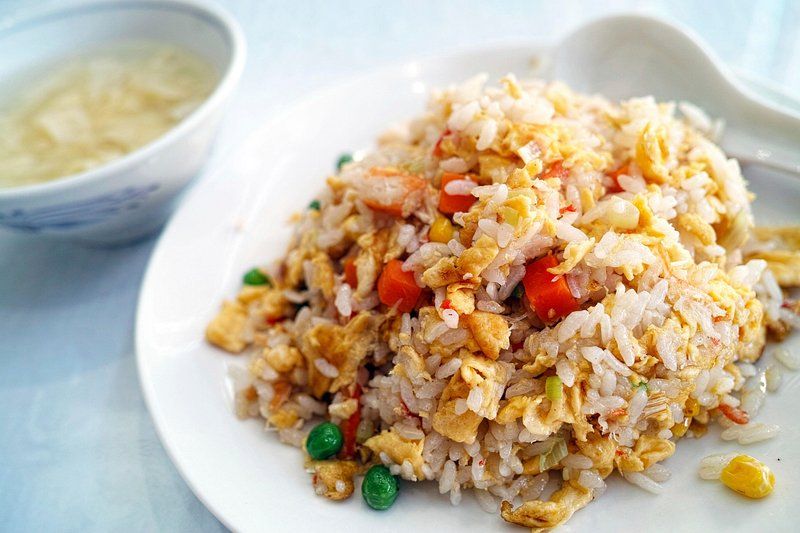
In the ever-evolving landscape of health and nutrition, the quest for optimal well-being often leads us down various avenues, including exploring how diet can influence our hormonal balance. Specifically, the discussion around natural testosterone enhancement through food has gained significant traction, prompting many to scrutinize their plates for ingredients promising such potent effects. However, the scientific narrative frequently points to a broader, more intricate tapestry of benefits that foods offer, often quite distinct from direct hormonal modulation.
It’s a common misconception that every food needs to fulfill a singular, powerful role like testosterone boosting to be deemed valuable. In reality, a vast array of dietary components contribute to health in myriad ways, supporting everything from metabolic function and cardiovascular health to immune resilience and overall vitality. These contributions, though perhaps less sensationalized, are nonetheless foundational to a thriving body, playing silent yet critical roles in maintaining overall wellness.
This in-depth exploration will take us on a journey through recent scientific findings concerning a selection of foods and food-related compounds that, while certainly integral to a healthy diet, have been observed through rigorous research to provide benefits quite separate from an impact on natural testosterone levels. Instead, we will shine a light on their verified properties and the profound ways they support health, drawing directly from recent studies. Our aim is to provide a clear, evidence-based understanding of what these dietary staples and novel ingredients truly bring to your table.

1. **Fermented Cricket Paste**The global demand for sustainable protein sources has led to increasing interest in edible insects, a category gaining recognition for its environmental and nutritional potential. Fermentation, a traditional food processing method, stands out as a technique capable of further enhancing the sensory and nutritional profiles of these novel foods. Recent research has focused on developing innovative insect-based products, such as fermented cricket paste, as a viable and beneficial alternative to conventional protein sources.
A study aimed at creating a fermented cricket paste, analogous to traditional shrimp paste, meticulously evaluated its physiochemical, nutritional, microbiological, and sensory properties. This involved a biphasic fermentation protocol, after which the paste’s various characteristics were thoroughly analyzed. The findings revealed that this cricket-based product presented a comparable protein content to traditional shrimp paste, alongside a higher carbohydrate profile and lower fat content, indicating a favorable nutritional balance.
Crucially, the fermented cricket paste demonstrated enhanced stability and safety. Researchers observed a significantly lower level of histamine, measuring 2.37 ppm, in stark contrast to the 50.51 ppm found in traditional shrimp paste. This considerable reduction in histamine contributes positively to the paste’s safety profile, addressing a key concern often associated with fermented products. While microbial profiles were generally similar between the two pastes, the cricket paste exhibited a slightly lower lactic acid bacteria community.
Sensory analysis further differentiated the fermented cricket paste, characterizing it by a dark color, a coarse texture, a distinctive nutty and earthy aroma, and a bitter, less umami taste compared to its shrimp counterpart. Despite these sensory distinctions, consumer acceptance testing, particularly when used in a chili paste, showed that liking for both products was statistically identical. This suggests that fermented cricket paste is not only a safe, stable, and nutritionally advantageous alternative but also one that is highly acceptable to consumers as a culinary ingredient, offering a sustainable path for dietary protein.

2. **Korla Fragrant Pears**Evaluating the quality and maturity of fruits is crucial for both consumers and agricultural industries, often relying on various indices that can sometimes be limited in their comprehensive assessment. For Korla fragrant pears, a recent study addressed this challenge by proposing a novel and more integrated approach. The researchers introduced the firmness–soluble solids ratio (FSR), defined as the ratio of average firmness (FI) to soluble solid content (SSC) for each individual fruit, aiming to provide a more holistic quality metric.
This investigation utilized a substantial dataset, comprising 600 samples from five distinct maturity stages of Korla fragrant pears. Hyperspectral imaging, operating within the 950–1650 nm range, was employed to gather data, and the dataset was systematically split using the SPXY algorithm for robust analysis. The study successfully demonstrated the effectiveness of the FSR in accurately quantifying the dynamic relationship between fruit firmness and soluble solid content throughout the maturation process, offering a refined understanding of pear development.
To achieve high prediction accuracy for these quality indices, the researchers developed a multiscale convolutional neural network–long short-term memory (MSCNN–LSTM) model. This advanced model proved highly effective, yielding determination coefficients of 0.8934 for firmness, 0.8731 for soluble solid content, and 0.8610 for the FSR. The corresponding root mean square errors were 0.9001 N, 0.7976%, and 0.1676, respectively, all confirming the model’s remarkable robustness with residual prediction deviation values exceeding 2.5.
The MSCNN–LSTM model’s performance was noted to be superior when compared to other benchmark models, highlighting its advanced capabilities in fruit quality assessment. Furthermore, the integration of these prediction models with visualization techniques allowed for the successful mapping of the spatial distribution of quality indices within the pears. For maturity discrimination, hyperspectral-based partial least squares discriminant analysis and linear discriminant analysis models achieved perfect classification accuracy of 100% under five-fold cross-validation across all five maturity stages. This comprehensive work provides both a theoretical basis and a technical framework for the non-destructive evaluation of the comprehensive quality and maturity in Korla fragrant pears, ensuring better quality control and consumer satisfaction.

3. **Hesperidin**Atherosclerosis (AS) remains a significant global health challenge, with current treatments often falling short of offering fully effective solutions. In this context, natural compounds are frequently explored for their therapeutic potential, and hesperidin, a flavonoid found abundantly in citrus fruits, has emerged as a promising candidate. A recent study investigated hesperidin as a potential therapy for atherosclerosis, shedding light on its multifaceted benefits.
Using Apolipoprotein E knockout (ApoE−/−) mice as a well-established model of atherosclerosis, researchers observed compelling results following hesperidin treatment. The compound was found to significantly improve physiological and metabolic health in these mice. Notably, hesperidin treatment led to a reduction in plaque formation, a hallmark of atherosclerosis, suggesting a direct protective effect on cardiovascular health. Beyond plaque reduction, the natural compound also decreased systemic inflammation and oxidative stress, two key contributors to the progression of arterial disease.
Beyond its direct impact on cardiovascular markers, hesperidin demonstrated an ability to reshape the gut microbiota, which is increasingly recognized as a crucial player in overall health and disease. The treatment led to an increase in beneficial bacteria, specifically Verrucomicrobia and Bacteroidota, indicating a positive modulation of the gut environment. This shift in microbial composition was accompanied by a significant lowering of fecal levels of branched-chain amino acids (BCAAs), including valine, leucine, and isoleucine, by 27.4%, 50.1%, and 40.8%, respectively.
These reductions in BCAA levels were directly linked to the observed specific microbial shifts, highlighting an intricate gut microbiota–BCAA–host axis interaction. The study concluded that hesperidin alleviates atherosclerosis likely through this complex modulation, identifying it as a promising dietary intervention or therapeutic agent. This research underscores hesperidin’s potential not as a hormonal agent, but as a powerful ally in combating atherosclerosis through improvements in gut health, metabolism, and inflammation.
Read more about: Unraveling the ‘Danger’ Myth: 8 Foods and Components Whose Truths Science Uncovered
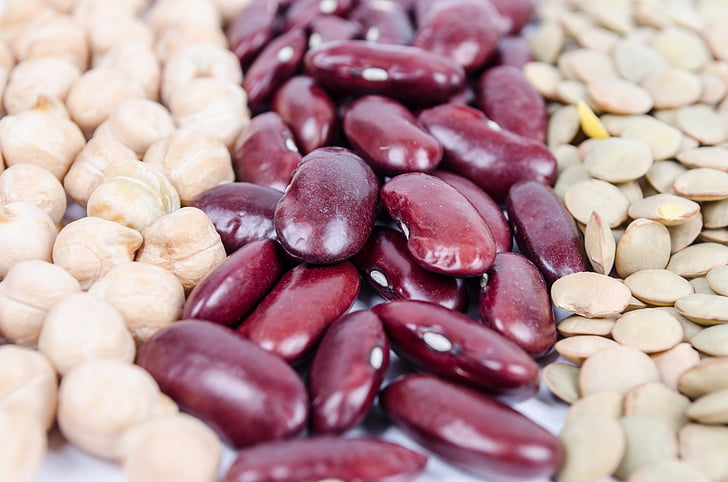
4. **Colored Kidney Beans**Raw kidney beans, specifically *Phaseolus vulgaris L.*, are a valuable source of nutrition, yet they contain antinutrients that can limit their digestibility and overall health benefits. Developing efficient and industrially viable methods for detoxifying these beans while simultaneously enhancing their nutritional properties is a significant area of research. A recent study focused on an innovative water-assisted microwave processing technique to achieve this dual objective.
The optimized method involved a brief 5-minute water soaking combined with intermittent microwaving at 500 W for 5 minutes. This approach yielded remarkable results, leading to significant reductions in key antinutrients across four colored varieties of kidney beans. Phytic acid levels were reduced by 43–49%, tannins by 74–90%, and saponins by 59–68%, all falling below safety thresholds. Concurrently, this processing method significantly elevated the beans’ antioxidant capacity, with Ferric Reducing Antioxidant Power (FRAP) increasing by 66–115%.
Further in-depth metabolomic analysis identified 412 distinct metabolites, revealing a substantial accumulation of critical antioxidants, including glutathione and various quercetin derivatives. This comprehensive analysis provided insights into the biochemical changes occurring during the processing. Pathway analysis elucidated the dual mechanisms at play: detoxification was facilitated by activated phenylpropanoid biosynthesis, which degraded tannin precursors, and by glutathione metabolism, which reduced phytate levels.
Simultaneously, nutrient enrichment was observed through the upregulation of phenolic biosynthesis and color-specific flavonoid/betalain pathways, contributing to the enhanced antioxidant profile. This integrated water-assisted microwave processing approach achieved detoxification comparable to traditional 30-minute boiling, but in just 5 minutes. The findings establish this method as an efficient strategy for the industrial-scale production of safer, nutrient-enhanced legumes, offering a practical way to improve the accessibility and health benefits of kidney beans without impacting hormonal balance.
Read more about: Unraveling the ‘Danger’ Myth: 8 Foods and Components Whose Truths Science Uncovered
5. **‘Annurca’ Apples**The ‘Annurca’ apple, a cherished traditional Italian cultivar, holds a protected designation of origin as “Melannurca Campana” EU PGI. It undergoes a unique and mandatory traditional postharvest reddening process in structures known as *melaio*. While this process is indispensable for developing the apple’s characteristic flavor and vibrant color, it often comes with a trade-off: significant textural degradation, resulting in a mealy and soft fruit that frequently falls short of modern consumer expectations for crispness and firmness.
A recent study aimed to resolve this inherent quality trade-off by investigating an integrated postharvest strategy. Researchers evaluated the sensory profile and consumer acceptance of ‘Annurca’ apples subjected to three different treatments. These included the traditional *melaio* reddening, a 1-methylcyclopropene (MCP) treatment alone—known for its ability to maintain fruit firmness—and a combined treatment of MCP followed by *melaio* reddening (MCP+Melaio).
A large panel of 534 consumers participated in evaluating the apples for overall liking and the intensity of seven key sensory attributes. The results clearly indicated that the integrated ‘MCP+Melaio’ treatment was significantly preferred, with a mean liking score of 6.61, compared to both the traditional ‘Melaio’ treatment (M = 5.91) and the ‘MCP’ alone treatment (M = 5.91). This superior preference was attributed to a well-balanced sensory profile achieved through the combined approach.
The integrated treatment successfully married the high crunchiness and low mealiness typically preserved by MCP treatment with the intense aroma and sweetness developed during the *melaio* phase. Further analysis through consumer segmentation identified four distinct preference clusters. The success of the integrated treatment was largely due to its ability to satisfy the divergent priorities of the two largest segments: “Melaio Fans,” comprising 37% of consumers, and “Texture & Flavor Seekers,” making up 35%. This demonstrates a broad appeal across different consumer preferences.
Ultimately, the findings underscore that combining 1-MCP with traditional postharvest practices creates a synergistic effect. This approach yields a high-quality apple that is texturally superior, aromatically intense, and boasts an extended sensory shelf-life. This scientifically validated and practical solution offers a significant enhancement to the quality and consistency of ‘Annurca’ apple production, focusing on sensory attributes rather than hormonal effects.
Read more about: Unraveling the ‘Danger’ Myth: 8 Foods and Components Whose Truths Science Uncovered

6. **Sauced Duck**In the realm of food processing and preservation, understanding how ingredients penetrate food matrices is vital for ensuring product quality, safety, and sensory appeal. For products like sauced duck, the effective penetration of curing agents, such as salt, plays a critical role in developing desired flavors, textures, and extending shelf life. A recent study delved into the intricacies of this process, particularly exploring novel methods to enhance efficiency.
Specifically, this research investigated the effect of ultrasound-assisted curing on salt penetration in sauced duck. The application of ultrasound technology in food processing is an area of growing interest due to its potential to accelerate mass transfer processes, which can lead to more efficient curing and reduced processing times. This study aimed to evaluate how this innovative physical treatment influences the distribution and depth of salt within the duck meat.
The investigation employed advanced analytical techniques, combining Low-Field Nuclear Magnetic Resonance (LF-NMR) and Magnetic Resonance Imaging (MRI) analyses. These powerful tools provide non-invasive and detailed insights into water distribution, molecular mobility, and substance diffusion within food products. By utilizing LF-NMR and MRI, researchers could gain a comprehensive understanding of the dynamics of salt penetration, observing its pathways and concentration gradients within the sauced duck tissue under ultrasound assistance. This methodological rigor highlights a commitment to precise scientific inquiry into food quality.
Read more about: Unraveling the ‘Danger’ Myth: 8 Foods and Components Whose Truths Science Uncovered
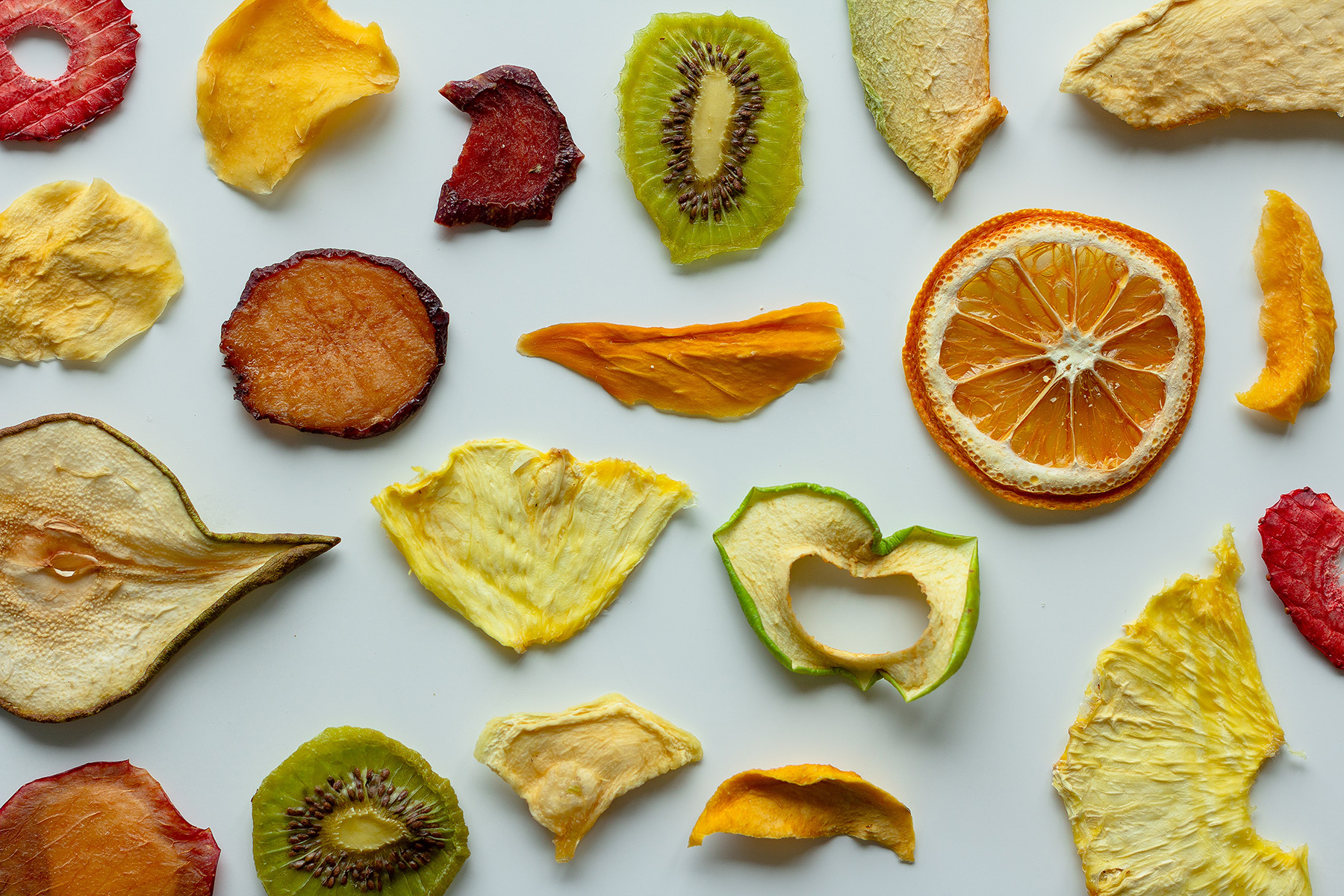
7. **Drying Ginger Slices**Ginger, a widely valued spice and traditional medicinal ingredient, is frequently processed into dried slices for extended preservation and ease of use. However, conventional drying methods often compromise the quality of ginger slices, affecting their rehydration capacity, color, hardness, and crucially, their content of bioactive compounds like total gingerols. This necessitates the development of improved drying techniques that can maintain or even enhance these desirable characteristics.
A recent study explored the efficacy of a novel approach: low-field magnetic resonance (LF-NMR) drying, comparing it against more traditional methods such as natural drying and hot air drying. The research focused on understanding the drying characteristics, microstructure, and overall quality attributes of ginger slices under these different conditions. Furthermore, it investigated water distribution and migration changes during the drying process, assessing the broader feasibility of LF-NMR in drying applications.
The comparative analysis evaluated several key quality indicators, including drying rate, shrinkage rate, rehydration ratio, color, hardness, moisture content, and the concentration of total gingerols. Microstructural changes were also closely examined. The results strikingly demonstrated that low-field magnetic resonance drying significantly outperformed both natural drying and hot air drying across multiple parameters, showcasing its potential as a superior processing method.
Specifically, LF-NMR drying yielded significantly better rehydration ratios, maintained more vibrant color, preserved higher levels of total gingerols, and resulted in improved hardness and microstructure characteristics. Beyond these improvements, the method also enhanced the drying rate, reduced the shrinkage rate, and generally improved the sensory quality of the dried ginger slices. Importantly, low-field magnetic resonance drying was found to maintain the original taste and flavor of the ginger slices, leading to superior overall quality characteristics. This study thus introduces a promising new method for the high-quality processing of ginger slices, focusing on enhancing their inherent beneficial compounds and sensory attributes for wider wellness applications.”
Diving Deeper into Dietary Science: An examination of seven more foods and food components, revealing their specific applications and wellness contributions according to recent research.
Following our exploration of various foods and their scientifically validated health benefits, we continue our journey into the fascinating world of dietary science. This next segment will further unveil the intricate ways specific foods and food components contribute to our well-being, all supported by rigorous research, demonstrating benefits that extend far beyond any direct influence on natural testosterone levels. Prepare to discover the diverse applications and wellness contributions these items bring to the table.
Read more about: Beyond the Fries: 15 Mind-Blowing Dishes You Won’t Believe Your Air Fryer Can Make!
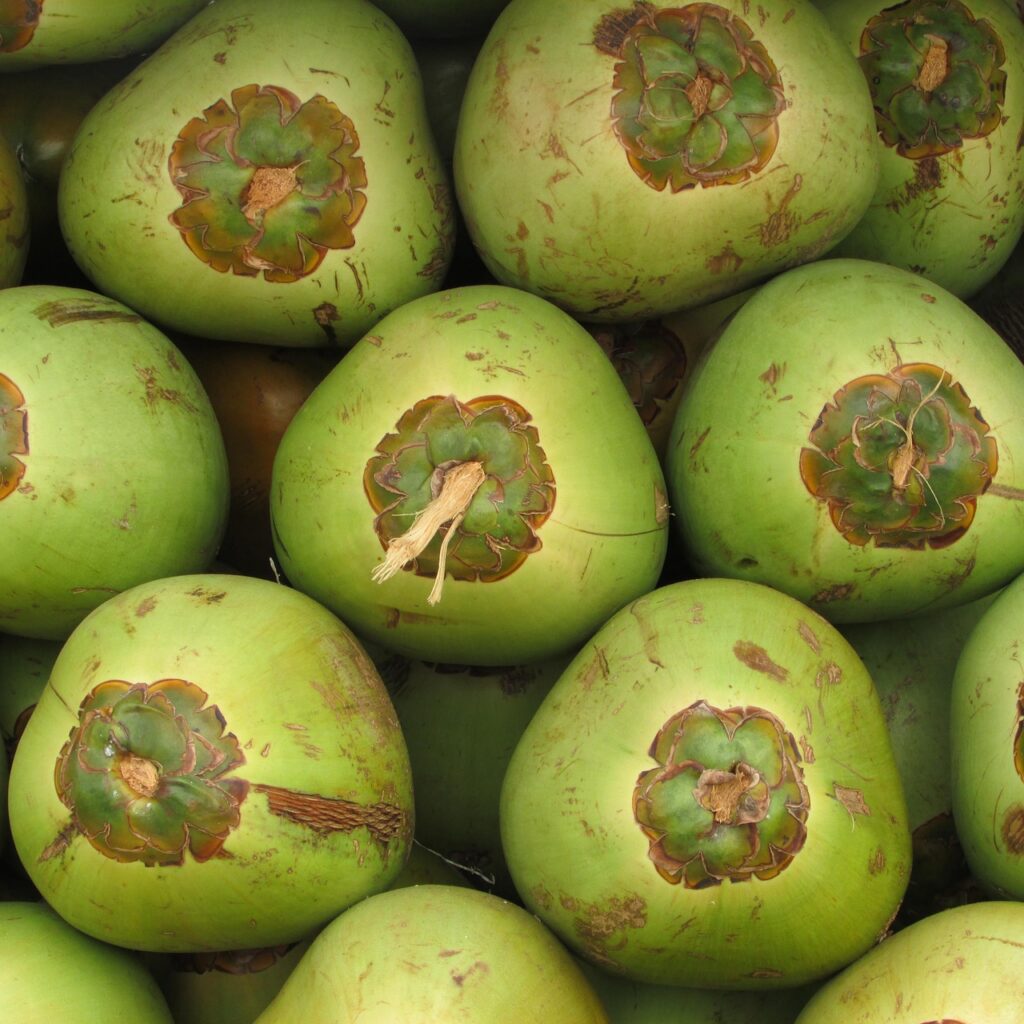
8. **Poria cocos Polysaccharide-Modified Selenium Nanoparticles**Selenium nanoparticles (Se NPs) are emerging as a promising alternative to traditional selenium sources in dietary supplements, offering novel avenues for nutritional support. However, their practical application has often been hindered by limited stability and a tendency to aggregate in aqueous environments. Recent advancements have focused on enhancing these properties through modification, leading to the development of innovations such as Poria cocos polysaccharide-modified Se NPs (PCP-Se NPs).
A recent study successfully synthesized PCP-Se NPs using a selenite/ascorbic acid chemical reduction method. These modified nanoparticles exhibited a uniformly dispersed spherical morphology with an average particle size of 66.64 ± 0.30 nm and an amorphous crystal structure. Critically, compared to unmodified Se NPs, PCP-Se NPs demonstrated significantly improved stability, including low selenium release (8.83 ± 0.73%) after simulated gastrointestinal digestion, along with excellent storage and salt ion stability. This enhancement is vital for ensuring their efficacy as a dietary supplement.
Beyond their structural integrity, PCP-Se NPs showcased potent antioxidant activity, effectively scavenging DDPH and ABTS radicals, which are key indicators of antioxidant capacity. Further research highlighted their ability to be efficiently internalized by RAW264.7 cells and released into the cytoplasm via a lysosomal escape mechanism. This cellular interaction is crucial for their biological effects, which include reducing intracellular inflammatory factor levels and alleviating oxidative stress within cells. The levels of inflammatory markers like MPO, NO, iNOS, TNF-α, and IL-1β were significantly reduced, while IL-10 levels were increased, indicating a balanced anti-inflammatory response.
Moreover, the study revealed that PCP-Se NPs contributed to maintaining mitochondrial membrane potential stability, a fundamental aspect of cellular health and energy production. These comprehensive findings provide a robust scientific basis for improving the stability and bioavailability of selenium nanoparticles. The development of such novel selenium-enriched dietary supplements offers a pathway to enhance overall health and cellular protection, underscoring their value as a nutritional component with no direct links to hormonal regulation.
Read more about: Unraveling the ‘Danger’ Myth: 8 Foods and Components Whose Truths Science Uncovered

9. **Mangoes**Maintaining the postharvest quality of fruits like mangoes, especially during prolonged storage, presents a significant challenge for growers and distributors. These tropical delights are susceptible to rapid ripening and degradation, which can impact their market availability and consumer satisfaction. A recent study aimed to address these issues by investigating an integrated preservation approach for ‘Guifei’ mangoes.
This research explored the combined effects of controlled atmosphere (CA) storage and 1-methylcyclopropene (1-MCP) treatment on mangoes. The findings indicated that CA storage alone was effective in reducing ethylene production, respiration rates, and weight loss, while also inhibiting the degradation of titratable acid (TA) and maintaining fruit firmness and total soluble solids (TSS). These factors are critical for preserving the overall quality of the fruit.
However, the study also revealed that 1-MCP treatment, when applied individually, offered an even more potent suppression of ethylene synthesis and respiration, demonstrating a direct and powerful impact on the ripening process. The most remarkable results were achieved when CA and 1-MCP treatments were combined. This synergistic approach extended the shelf life of mangoes to an impressive 45 days, effectively preserving firmness, TA, and TSS, while minimizing weight loss and significantly inhibiting undesirable changes in peel color.
Furthermore, the integrated treatment positively modulated the profile of volatile organic compounds (VOCs) that define the characteristic aroma of mangoes. Specifically, it maintained higher levels of crucial esters such as hexyl acetate and hexyl hexanoate. This comprehensive strategy offers a practical and efficient solution for enhancing the postharvest preservation of mangoes, ensuring improved quality and extended market availability, all through mechanisms entirely unrelated to hormonal balance.
Read more about: Mediterranean Diet vs. Keto: Unpacking the Science for Your Ultimate Long-Term Weight Loss Strategy
10. **Soy Protein Isolate**Soy protein isolate (SPI) stands as a cornerstone in the food industry, widely appreciated for its exceptional nutritional value, making it a popular choice in various food products and supplements. Despite its benefits, certain limitations, particularly its potential allergenicity and specific physicochemical properties, can sometimes restrict its broader application. Scientists are continuously seeking innovative methods to mitigate these issues and unlock SPI’s full potential.
A recent investigation focused on the effects of high hydrostatic pressure (HHP) treatment on the allergenicity and functional characteristics of SPI. The goal was to develop safer and more adaptable soy-based ingredients. Raw SPI underwent various HHP treatments, ranging from 200 to 600 MPa for durations of 5, 10, and 15 minutes. The study meticulously assessed the allergenicity by measuring the immunoreactivity of major soy allergens, Gly m 5 and Gly m 6, using enzyme-linked immunosorbent assay (ELISA).
The results were highly encouraging, demonstrating that HHP treatment significantly reduced the immunoreactivity of both Gly m 5 and Gly m 6. Higher pressure and longer treatment durations led to more substantial reductions, with specific conditions yielding over 60% and nearly 70% decreases in Gly m 5 and Gly m 6 immunoreactivity, respectively, showcasing a significant step towards developing hypoallergenic soy products. This is a critical development for individuals with soy sensitivities.
Beyond allergenicity reduction, HHP treatment positively modulated the physicochemical properties of SPI, enhancing its protein solubility, emulsifying activity, and stability, alongside altering its foaming characteristics. These functional improvements are vital for food applications, impacting texture, consistency, and overall product performance. Techniques like differential scanning calorimetry (DSC) and sodium dodecyl sulfate–polyacrylamide gel electrophoresis (SDS-PAGE) confirmed structural modifications through protein denaturation, aggregation, and fragmentation, explaining the altered properties. This research establishes HHP as a promising non-thermal processing technology for creating safer, more functional soy-derived ingredients for a wide range of food products, with no reported impact on testosterone levels.
Read more about: Mastering Midlife: 12 Key Foods for Men’s Strength and Unwavering Vitality After 40

11. **Roasted Sesame Oil**Roasted sesame oil (RSO) is a culinary treasure, celebrated globally for its distinctive, rich aroma and complex flavor profile. These highly desirable sensory attributes are largely due to a unique blend of volatile compounds and potent antioxidants naturally present in the oil. However, the delicate quality and oxidative stability of RSO can be significantly compromised by improper storage conditions, leading to a degradation of its sensory appeal and nutritional value.
A recent study undertook a comprehensive investigation into how different storage conditions—specifically temperature (4 °C, 25 °C, and 60 °C) and exposure to light (dark vs. light)—impacted the quality and oxidative stability of RSO over a 12-month period. Researchers meticulously measured key quality parameters, including peroxide value (PV), acid value (AV), p-anisidine value (p-AnV), and total oxidation (TOTOX) value, providing a clear picture of the oil’s oxidative state. They also analyzed antioxidant capacity and the volatile compound profiles.
The findings decisively revealed that both elevated temperatures and exposure to light drastically accelerated the oxidative deterioration of RSO. Samples stored at 60 °C, especially when exposed to light, showed the highest values across all oxidation indicators (PV, AV, p-AnV, and TOTOX), signifying rapid rancidity and a loss of freshness. This highlights the importance of environmental control in preservation.
Conversely, the study demonstrated that storing RSO at a cool temperature of 4 °C in the dark was highly effective in preserving its oxidative stability and maintaining its characteristic aroma profile, with minimal changes observed throughout the entire storage period. Gas chromatography–mass spectrometry (GC-MS) analysis further confirmed that essential volatile compounds responsible for RSO’s unique flavor, such as pyrazines and furans, were significantly better retained under these optimal conditions. This research strongly underscores the critical importance of proper storage—cool, dark environments—in extending the shelf life and preserving the sensory and nutritional integrity of roasted sesame oil, all without any evidence of affecting hormonal levels.
Read more about: The Definitive Wirecutter Guide: Comparing Top Meal Kit Delivery Services for Busy Professionals

12. **Purple-Fleshed Sweet Potato**Purple-fleshed sweet potato (PFSP) has gained considerable attention, not only for its striking vibrant color but also for its rich concentration of anthocyanins and other valuable bioactive compounds. These attributes contribute to its potential health benefits, making it an increasingly popular food choice. Drying is a common processing method for PFSP to create various food products, yet the chosen drying technique can profoundly influence its final quality, including nutritional content, color, texture, and rehydration capacity.
A recent study embarked on a comparative analysis of four distinct drying methods—hot air drying (HAD), vacuum drying (VD), freeze drying (FD), and microwave vacuum drying (MVD)—to assess their impact on the physicochemical and nutritional quality of PFSP slices. The goal was to identify the most effective method for preserving this valuable crop. The results clearly indicated that freeze drying (FD) consistently yielded the best quality attributes across multiple parameters.
PFSP slices processed by FD exhibited superior retention of anthocyanins, total phenolic content, and overall antioxidant activity, all crucial for their health benefits. This method also preserved the most vivid purple color, minimized shrinkage, and delivered excellent rehydration capacity, suggesting less structural damage during the drying process. In stark contrast, hot air drying (HAD) led to the most significant degradation of bioactive compounds, substantial browning, increased hardness, and poor rehydration properties, primarily due to prolonged exposure to high temperatures.
Vacuum drying (VD) and microwave vacuum drying (MVD) presented intermediate results. MVD, while offering a faster drying rate, preserved more bioactive compounds and better color than HAD, though it still did not match the superior performance of FD. The study concluded that freeze drying is indeed the most effective method for preserving the nutritional and sensory quality of purple-fleshed sweet potato slices, ensuring that consumers receive products with maximal health benefits and desirable characteristics, without any discernible impact on testosterone levels.
13. **Lactobacillus plantarum C4***Lactobacillus plantarum* C4, a well-recognized lactic acid bacterium, has become a focal point of research due to its significant potential as a probiotic and its utility as a starter culture in the production of various fermented foods. A thorough understanding of its physicochemical properties and fermentation performance is essential to optimize its application in industrial food production and maximize its health-promoting benefits for consumers.
A recent study meticulously characterized the phenotypic and genotypic features of *Lactobacillus plantarum* C4, rigorously assessing its viability under simulated gastrointestinal conditions, its antimicrobial activity, and its performance when fermenting diverse food substrates. The findings were highly promising, revealing that *Lactobacillus plantarum* C4 demonstrated robust viability even under harsh conditions, specifically low pH (pH 2.0) and in the presence of bile salts (0.3%). This resilience indicates its strong potential to survive passage through the human gastrointestinal tract and effectively exert its probiotic effects.
Furthermore, this particular strain exhibited significant antimicrobial activity against several common foodborne pathogens, including *Escherichia coli* and *Staphylococcus aureus*. This characteristic suggests its vital role not only in improving food safety but also in contributing to a healthier gut microbiome by inhibiting harmful bacteria. In fermentation trials, *Lactobacillus plantarum* C4 showcased excellent performance, rapidly metabolizing various carbohydrates to produce lactic acid, which is instrumental in developing the characteristic flavor and extending the preservation of fermented products.
Its observed ability to produce specific enzymes further enhances nutrient bioavailability in fermented foods, making nutrients more accessible and beneficial to the consumer. These compelling results highlight *Lactobacillus plantarum* C4 as an exceptional candidate for use as a probiotic in dietary supplements and as an effective starter culture across a wide range of fermented food production, offering substantial benefits for gut health and food preservation, rather than any direct hormonal influence.

14. **Black Ginseng**Sleep disorders represent a pervasive global health concern, profoundly affecting individuals’ quality of life, overall well-being, and daily functioning. In the ongoing search for effective remedies, traditional herbal interventions, such as ginseng, have long been recognized for their diverse therapeutic properties. A recent study aimed to investigate the specific effects of black ginseng (BG) on improving sleep quality, particularly in rodent models, by exploring its underlying mechanisms of action.
The research specifically focused on how black ginseng might regulate the gut microbiota and influence the 5-hydroxytryptamine (5-HT) pathway, commonly known as the serotonin pathway. Rodents were administered black ginseng extracts, and their sleep patterns were meticulously monitored. The results were quite revealing, indicating that black ginseng administration significantly reduced sleep latency—the time it takes to fall asleep—and notably increased the duration of non-rapid eye movement (NREM) sleep, both strong indicators of improved sleep quality.
Further mechanistic investigations provided crucial insights, demonstrating that black ginseng modulated the composition of the gut microbiota. This modulation led to an increase in beneficial bacteria, which are known to produce short-chain fatty acids (SCFAs) and other metabolites that directly influence brain function and overall neurological health. Concurrently, BG treatment upregulated the expression of tryptophan hydroxylase (TPH) in the gut, a key enzyme involved in the synthesis of serotonin (5-HT), and subsequently increased 5-HT levels in both the gut and the brain. Serotonin is a vital neurotransmitter critically involved in regulating sleep-wake cycles, mood, and cognitive functions.
These comprehensive findings strongly suggest that black ginseng improves sleep quality through a sophisticated mechanism involving the establishment of a beneficial gut microbiota–5-HT axis. By promoting a healthier gut environment, black ginseng indirectly but effectively influences central nervous system functions that are directly related to sleep. This study provides a solid scientific basis for considering black ginseng as a valuable natural intervention for sleep disorders, highlighting its multifaceted benefits through gut-brain axis modulation, rather than any direct effect on testosterone levels.
Read more about: Smart Shopper Secrets: 7 Things to Skip at Discount Stores
As we conclude this extensive exploration, it becomes strikingly clear that the world of nutrition offers an extraordinary tapestry of benefits far richer and more diverse than often perceived. Beyond the often-sensationalized quest for direct hormonal impacts, the foods and food components we’ve examined—from sustainable proteins to post-harvest innovations and gut-brain modulators—each play a silent yet crucial role in fostering holistic wellness. These evidence-based insights empower us to make informed dietary choices, appreciating the profound, multifaceted contributions these ingredients make to our health journey, continually reinforcing that true well-being is built on a foundation of diverse, scientifically supported nutritional wisdom.”

